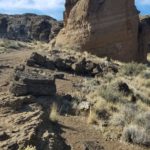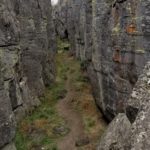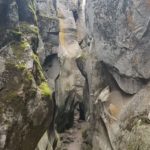
There is a reason that the southeast area of Oregon, home to the high desert basin, is called the Oregon Outback. Once on highway 31 heading east out of La Pine, the landscape becomes more brown than green and towns become sparse. La Pine is not a large town, with a population hovering just over 1,600 people, but it is the largest town we would see for days as we drove out for an end-of-summer getaway in a place called Summer Lake.

Summer Lake is not a lake at all. That was what was first evident as we drove along the highway, checking our route on the tablet maps app and seeing that the dry field out the window was indeed the place labeled as summer lake on the map. Summer lake is a seasonal wetland. The name which first seemed misleading was wholly appropriate as there is enough water there in early summer for it to look deceptively like a lake.
The high desert basin in Oregon gets cold in winter, hot in summer, and doesn’t get much rain. Even in the summer, temperatures at night can get pretty cold. People like us that live in the green and rainy western part of the state are somehow of the assumption that the high desert is a recreational wonderland filled with places to hike, camp, and fish, or go skiing in the winter.
Even though this was our second outing into the region, which is in our home state, I felt like a foreigner. I’m used to areas where you don’t have to drive 20 miles to find something to eat and a town consists of more than a gas station and a church. The people who live here year-round probably have a name for people like me.


Eventually we arrived at the southern end of Summer Lake, and the Summer Lake Hot Springs resort. The resort owner took over the place twenty or so years ago and appears to have been continuously making improvements. The resort seems to attract all kinds of visitors. Some older people in RVs seemed to be just passing through. There are several cabins on the property as well, and a large field for tent-camping that is usually full twice a year with people heading to, or back from, Burning Man. Some locals there were stopping by on the way to their usual hunting camps and we also met some young people who came for spelunking in the nearby caves.
To explore the area requires quite a bit of time on the road, but there are some really amazing natural sites to explore, and even a few real lakes with fish in them.
The names of some of the places we visited weren’t very creative, and did no justice to the incredible scenery we encountered at places like Fort Rock, Crack in the Ground, and Big Hole. The geology of the whole area is owing to volcanic activity thousands of years ago and, before that, the ocean waters that covered the lower areas. Eroded cliffs rise from sand dunes dotted with sage and an occasional juniper. It makes for a beautiful drive (and we did plenty of driving) but I found it even more impressive when we were able to get out of the car and hike into the desert. Many places were not far from the road, once we got there. The feeling of being a foreigner dissipated in the natural landscape. Instead, there was a sense of homecoming and belonging. I have felt this before – when visiting England several years ago. I think this desert landscape is in my DNA, given to me by my native ancestors who lived in a similar, but warmer, climate in northern Mexico.
The climate in the Oregon Outback is extreme and the turn of the seasons happens abruptly. We were there in late September, just as the change began. Our first few days were sunny and a little cooler but not cold at all. Our last morning there, we woke up to snow.



